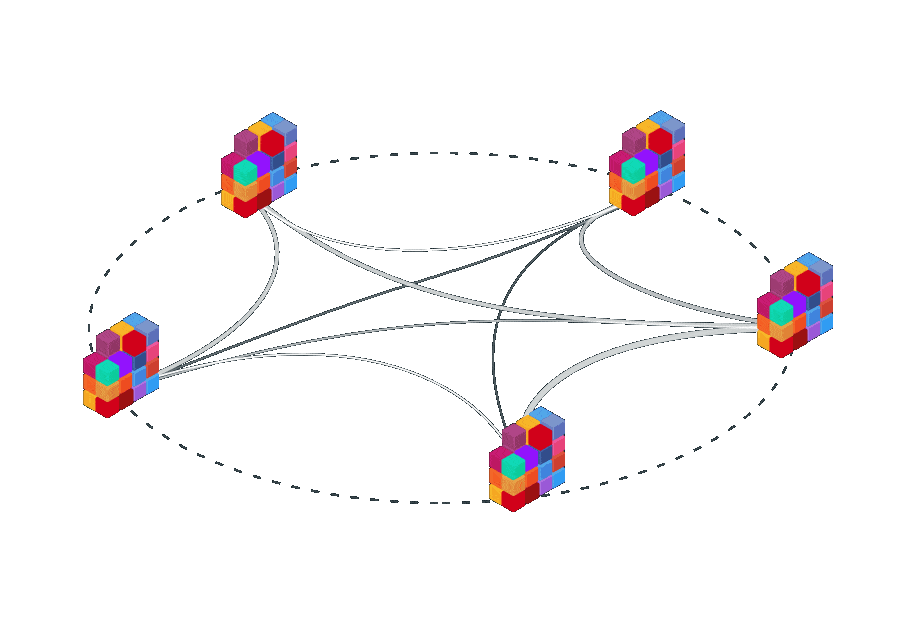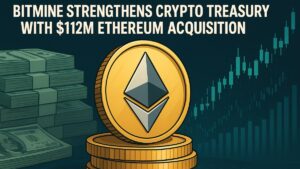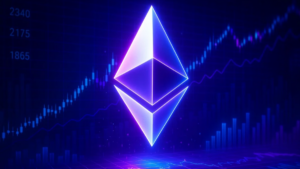Ethereum is the second most popular cryptocurrency in the world and one of the best markets among the altcoins. This is a somewhat populist definition, but really what is Ethereum?
Ethereum is a decentralized platform through which a developer can create intelligent contracts with another pair.
Anyone who knows about blockchain technology can create applications that process this type of contracts without any problem. What does this have to do with the rest of cryptocurrencies?
Ethereum as a blockchain platform offer tokens, known as Ether (ETH), which is what is normally purchased in the altcoins market.
However its blockchain allows the creation of other tokens under the ERC-20 standard that, together with its smart contracts service, offers a framework that many other projects can use to create their cryptocurrencies or tokens.
In addition to the ERC-20 standard, it also allows you to create other types of tokens:
- ERC-223 (which allows transferring tokens to contracts and smart contracts with the same function and with lower transfer rates)
- ERC-721 (allows to develop non-fungible tokens)
- ERC-777 (Provides improvements to the ERC-20 standard)
Despite its short life, it has managed to position itself as one of the most successful blockchain projects.
How Ethereum works as a system

For smart contracts, programs are written in high-level programming languages such as Serpent or Solidity.
Smart Contract
A smart contract is nothing more than that agreement that has the ability to be fulfilled automatically, it is only necessary that the parties agree to the terms.
Blockchain technology is responsible for securing them so that they cannot be manipulated in the future.
At the time, Ethereum was shown as an improved alternative to the Bitcoin platform, especially because of its ability to set withdrawal limits, create financial smart contracts or guard the blockchain.
What is Ether [ETH]?
Ether [ETH] is the cryptocurrency of the Ethereum system. This is what allows the platform to work because it is the means by which users of the platform can trade.
In short, it is the incentive for developers to work on the platform and the network to remain healthy.
According to agreements agreed in 2014, the annual production of ether is limited to no more than 18 million units per year, although that rate will not be maintained forever.
A new algorithm called Casper will soon be implemented which, in addition to being more efficient and less dependent on mining, will significantly reduce emissions so that the ceiling initially set at less than 100 million is never reached.
This algorithm will evolve from Ethereum 1.0 to Ethereum 2.0, with major changes such as replacing the POW (Proof of Work) consensus to POS (Proof of Stake).
ETH units
Like BTC, ETH is divided into smaller units called: Finney, Szabo, Shannon, Babbage, Lovelace and Wei in which each one is equivalent to one thousand of the next minor unit; 1000 Finney son 1 Ether, 1000 Szabo son 1 Finney, 1000 Shannon son 1 Szabo y así sucesivamente.
- 1 ETH
- 1 Finney = 0.001 ETH
- 1 Szabo = 0.000001 ETH
- 1 Shannon= 0.000000001 ETH
- 1 Babbage = 0.000000000001 ETH
- 1 Lovelace = 0.000000000000001 ETH
- 1 Wei = 0.000000000000000001 ETH
Ether [ETH] creation and growth

Shortly after its launch, Ethereum suffered an attack on its security through the DAO (Decentralized Autonomous Organization) project, which generated millions of dollars in losses, forced the developers to make a roll-back that subsequently generated a bifurcation in the chain of blocks that he created two coins; Ethereum and Ethereum Classic.
Despite the attack, Ethereum’s growth has not been affected so much. Its launch price was $ 0.35. In just over two years, it managed to increase its value by more than 1000 times to position itself at over $ 400 in 2017.
The best year for ETH was undoubtedly 2018, where we could find its historical peak in terms of price on January 13, 2018 reaching $1432.88
It has been so much its growth that at some point during this period it was possible to speculate on the possibility of replacing the BTC as the most important cryptocurrency, not because of its value, but because of the profitability of its mining.
How to get Ethereum
There are two essential ways to acquire Ethereum; buying and mining.
Buy Ethereum
One of the easiest means to get Ethereum and any other cryptomoney is to buy it from any of the available platforms.
Crypto Economy provides a guide on how to buy Ethereum.
Ethereum Mining
Mining is a different task, for it is necessary to have a RIG which you must assemble with different components.
Mining using a conventional computer is also an option but the profitability is much lower.
Conclusion about Ethereum [ETH]
Without a doubt, Ethereum is one of the most talked about projects in the crypto ecosystem. Its creator, Vitalik Buterin, is a reference in the sector.
The platform has a great community behind it and a team of developers who work tirelessly to take the project to another level.
In addition, Ethereum has the support of the EAA (Enterprise Ethereum Alliance), a community of leaders and blockchain companies that include names like Consensys, JP Morgan, Microsoft and Banco Santander among others.
“The EEA is a member-led industry organization whose objective is to drive the use of Ethereum blockchain technology as an open-standard to empower ALL enterprises. Our members are thought leaders from around the globe with a shared vision to create enterprise-ready solutions.”
If you are interested in the world of cryptocurrencies, Ethereum is one of the virtual coins you should not miss.


![What is Ethereum [ETH]?](https://crypto-economy.com//wp-content/uploads/2022/03/ethereum-1-1024x576.jpg)








